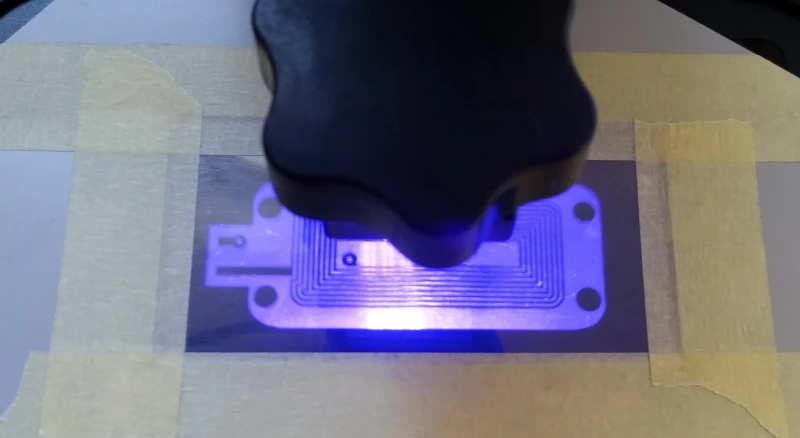We like to see people building things that are a little unusual, and we really like it when said unusual thing uses salvaged parts. This project from [JGJMatt] ticks all our boxes — the build creates a planar speaker that uses salvaged magnets from a hard drive.
A planar speaker, according to the post, uses wires and magnets to manipulate a flat film that acts as the transducer. The speaker housing is 3D printed and looks great but is otherwise unremarkable. The fun starts when a Dremel with a diamond disk cuts the magnets in half. Cutting neodymium poses several challenges. For example, if you heat the material up too much while cutting, it can lose its magnetism.
With the proper magnets, you can move to the tedious method of creating the coils. The post shows three different methods. But the part we really liked was using a resin 3D printer as a UV source to expose a resist mask which transfers to a copper or aluminum foil that will be the sound-generating film. [JGJMatt] used a similar technique to put resist on PC board blanks, too. Unfortunately, there were some issues so the finished speakers didn’t use the foil prepared using this method. Instead, a quick modification to the resin printer allowed a thin film of resin to rest on the foil, which was then exposed.
Once you have the pieces, there isn’t much left to do but put them together. Honestly, this is one of those things you probably won’t do yourself unless you are obsessed with speakers. But there were a lot of interesting techniques here that might come in handy, even if you don’t care about audio reproduction.
[JGJMatt] showed us a ribbon speaker before. We have seen some speakers that are practically all 3D printed.















Sound from both sides mixes and partially cancels out giving a washed out sound. There is a reason why any speaker diaphragm needs to be in a baffle. Even worse is the sound when the diaphragm is parallel and close with the table instead of at right angles one side facing towards you. Take a smaller speaker out of any enclosure and orient it in these different ways and then place the speaker in between your legs while seated. Big difference.
Magnet dust is not good, more will flake off of the cut. Seal the cut ends or this will stuff will stick out and buzz.
The wavelengths that a speaker like this performs well at are very short – significantly shorter than the journey around the driver.
There’s also plenty of compromise in speaker design – sure, the best case for reducing distortion is an infinite baffle. That takes up infinite space by definition.
Magneplanar (and electrostatic) speakers offer some of the least mechanical distortion compared to mechanical Cone box speakers. Experimenting with the rear baffle is a lot of trial and error for sure